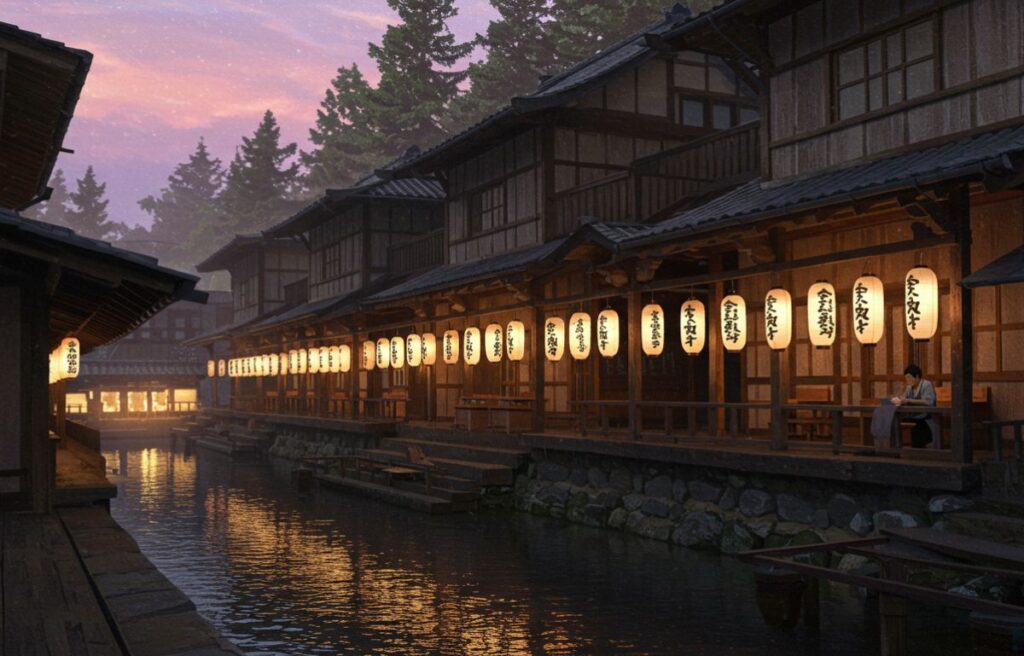Tsunaihaiya, a once-popular traditional Japanese game, carries a deep cultural resonance, often whispered about in niche history circles. With roots buried in community rituals and spiritual traditions, tsunaihaiya combines strategy, physicality, and ceremonial importance. Despite its obscurity today, understanding tsunaihaiya offers valuable insight into Japan’s rich tapestry of folklore, community bonding, and ancient entertainment.
Let’s delve into the essence of tsunaihaiya—its history, cultural significance, gameplay, and its mysterious decline in popularity.
Tsunaihaiya and Its Cultural Echo
Tsunaihaiya, though now obscure, was once a widely cherished tradition in Japan, especially during festivals and rural gatherings. The name tsunaihaiya loosely translates to “pull together” or “connect and celebrate,” which perfectly encapsulates the spirit of unity it fostered among participants.
Long ago, it wasn’t just a pastime; it was part of the cultural DNA—a blend of competitive joy and collective celebration. In modern times, tsunaihaiya has become rare, overshadowed by contemporary forms of entertainment. But its legacy still lingers, especially in folkloric records and community narratives.
Ancient Origins of Tsunaihaiya
Tsunaihaiya traces its lineage to the Heian period (794–1185), with some scholars speculating it originated even earlier. The game is believed to have evolved from Shinto rituals, where villagers would tug on sacred ropes as a symbolic act to ensure good harvests, banish evil spirits, or celebrate the changing of seasons.
Much like tug-of-war but with deeper symbolic context, grew into a structured game that combined physical strength, rhythm, and social coordination. Regional variations added different layers, from chants to rituals, making each version unique.
Tsunaihaiya in Japanese Festivals
Traditionally played during matsuri (festivals), was more than a game—it was a ritual. Entire communities participated, often involving hundreds of people. The large rope used would sometimes be over 100 meters long, crafted from rice straw and symbolizing fertility and strength.
Villagers believed that the team pulling the rope in the direction of the rising sun would receive a blessed year, an idea rooted in agrarian beliefs and sun worship.
Tsunaihaiya Traditions in Different Prefectures
Tsunaihaiya traditions varied widely across Japan. In Okinawa, it took a more musical and acrobatic form, incorporating traditional Eisa drums. In Kyushu, the game had an intensely competitive edge, where villages challenged each other annually.
Local dialects also influenced the chants, creating a unique auditory experience tied to the region. These regional flavors added to appeal, making it both a cultural showcase and a physical event.
Spiritual Significance of Tsunaihaiya
Unlike many modern games, carried strong spiritual undertones. Many believed it had the power to cleanse misfortune and restore harmony. Before the match, Shinto priests would often bless the rope and participants.
Pulling the rope wasn’t just about winning; it was an offering, a shared prayer wrapped in joyful tension.
What Tsunaihaiya Symbolizes in Japanese Folklore
In folklore, is often associated with deities of strength and agriculture. It symbolized duality—struggle and cooperation, chaos and order. Stories often depicted gods playing to resolve cosmic disputes, highlighting its spiritual weight.
How Tsunaihaiya is Played
A classic tsunaihaiya match requires a giant rope, two balanced teams, and a marked field. The rope’s center is often decorated with sacred cloth or bells. At the blow of a conch or drum, teams pull in opposite directions.
The goal? To pull the rope a certain distance to your side—usually marked by a central line—within a time limit.
Traditional Tools Used in Tsunaihaiya
The primary tool in is the tsuna (rope). These ropes are traditionally handmade, thick, and sometimes infused with symbolic herbs or charms. Other tools include bells, banners, and sometimes drums to synchronize movements.
Winning Tactics in Tsunaihaiya
Victory depends on more than brute strength. Teams that win usually focus on coordination, rhythm, and timely pulling. A common tactic is the “sway and snap,” where teams sway the rope before delivering a sudden coordinated pull.
Tsunaihaiya as a Tool for Community Bonding
One of most beautiful aspects is its ability to bring people together. Families, elders, and children all take part. It bridges age gaps and social differences, fostering unity and shared purpose.
Participation of Women in Tsunaihaiya
In many regions, women had special roles in . While sometimes barred from pulling the rope, they often led the chants or carried offerings. In some prefectures, female-only tsuna-ihaiya events are now emerging as a way to honor tradition and empower communities.
Tsunaihaiya for the Young Generation
Children’s versions of tsuna-ihaiya are simpler but retain core elements. These adaptations are often played in schools to teach history, cooperation, and cultural values. It’s a gentle way to keep the tradition alive.
Tsunai-haiya and its Seasonal Variants
Some regions only play tsuna-ihaiya during Obon, while others tie it to New Year celebrations. The season often dictates the rope’s design and the chants used. Summer events tend to be livelier, while winter matches are more solemn.
Tsunaihaiya’s Influence on Traditional Arts
Tsuna-ihaiya has inspired folk songs, calligraphy, and even traditional dances. Some noh plays subtly reference it in themes of unity and divine intervention. Its rhythmic nature also influenced Japanese drumming styles.
Attire Worn During Tsunaihaiya Events
Participants often wear happi coats, hachimaki (headbands), and tabi (traditional split-toe socks). These garments not only enhance festivity but also preserve cultural identity.
Why Tsunaihaiya Faded from the Spotlight
The rapid modernization of Japan in the 20th century led to urban migration and a decline in community-based events. As Western games and digital entertainment took center stage, tsuna-ihaiya slowly disappeared from the public eye.
Efforts to Bring Tsunaihaiya Back
Several cultural groups are now working to revive tsuna-ihaiya. Local festivals have started including it as a heritage event. Government-funded heritage grants are helping schools incorporate into cultural curriculums.
Teaching Tsunaihaiya in Schools
Education is key to revival. Schools that teach tsuna-ihaiya as part of cultural studies report stronger student engagement and a deeper respect for heritage.
Tsunaihaiya as a Cultural Attraction
Regions with a history of tsuna-ihaiya have begun promoting it as a tourist experience. Visitors can participate in mock games, make their own mini-ropes, and learn about its origins through interactive exhibits.
Tsunaihaiya in Movies and Books
While not widespread, a few Japanese novels and indie films have spotlighted tsuna-ihaiya as a nostalgic cultural motif. These works portray it as a metaphor for unity and resistance to modern alienation.
Contemporary Versions of Tsunaihaiya
Modern adaptations include tsuna-ihaiya-style games at corporate retreats, team-building events, and school sports days. These versions focus more on fun than ritual but retain the essence of teamwork.
Museums and Archives on Tsunaihaiya
Cultural museums in Okinawa, Kyoto, and Nagasaki preserve artifacts, ropes, and oral histories related to tsunai-haiya. These institutions play a pivotal role in keeping its legacy alive.
Tsunaihaiya vs Other Traditional Games
Compared to karuta or hanetsuki, tsuna-ihaiya stands out for its scale and spiritual symbolism. It’s less about competition and more about collective energy and harmony.
Is Tsunaihaiya Gaining Global Attention?
There’s budding interest among cultural anthropologists and tourists, but tsuna-ihaiya has yet to break into the global stage. Documentaries and global festivals may soon change that.
Embracing Tsunaihaiya’s Legacy
Tsuna-ihaiya reminds us of a time when games were sacred, laughter was collective, and traditions breathed life into communities. Preserving it isn’t just about nostalgia—it’s about honoring a philosophy where play, unity, and spirit are intertwined.







